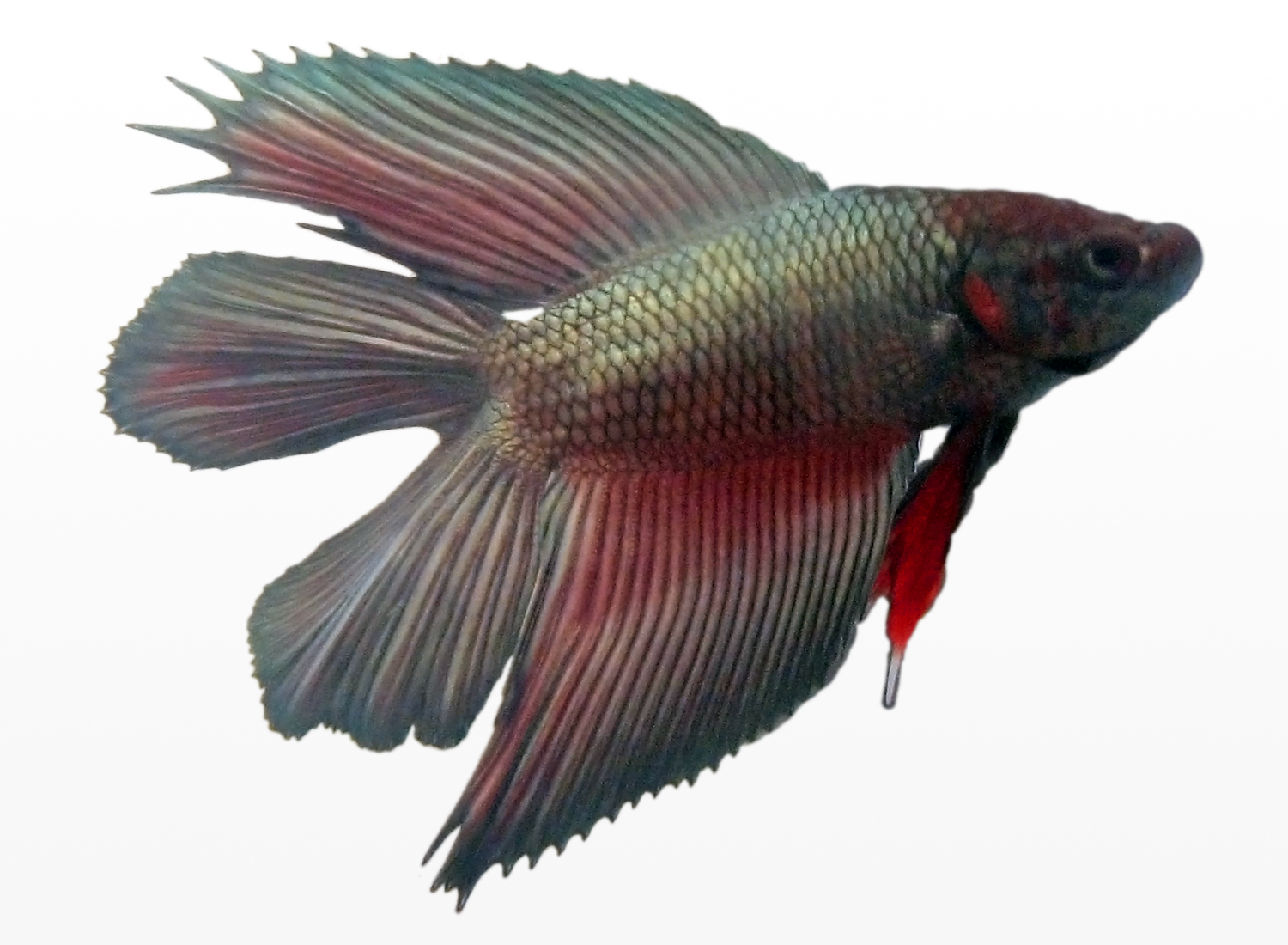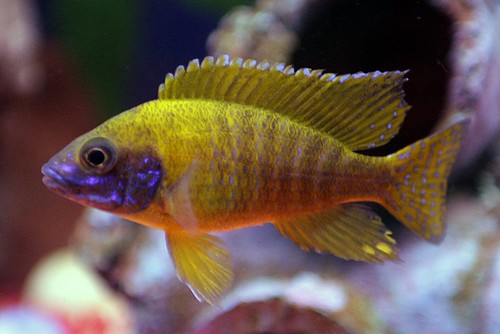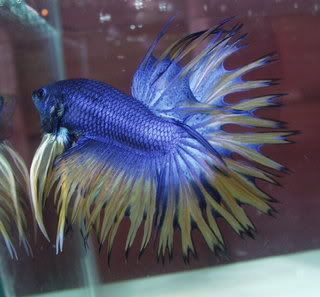
For hundred of years, the Siamese Fighting Fish or Betta splendens, has been kept and cultivated by people in Thailand (Siam). Today, the Betta is popular throughout the world – though not for the purpose of fish fighting but as a peaceful aquarium resident. Through years of selective breeding, pet store Bettas look vastly different from their original, wild-caught ancestors. Instead of just a few colors, they can now be purchased in an array of hues including red, blue, turquoise, black, white, yellow, and brown.
In addition, their fins have greatly increased in size and are much more elaborate; among the different types of hybrids available are the Veil Tail, Delta Tail, Half Moon, Double Tail, and Crown Tail. Of course, it is only the males that have the long, elegant fins and do all the fighting. Females have much shorter fins and are not as vividly colored as the males. Interestingly, Bettas are air breathers; they use a unique organ called the labyrinth to process the oxygen in the air and they will die if they are unable to reach the waters surface.
The Betta’s native habitat is the warm, still ponds, swamps and rice paddies of Southeast Asia. There, among the leaves and branches of the dense undergrowth, these carnivorous fish hunt for small insects and larvae.

Although the Bettas found in pet stores today have been captive bred, they should be kept in conditions that mimic their ancestor’s natural environment. Therefore, an aquarium (minimum size of 10 gallons) that is decorated with several plants and that has gentle water movement will suit them best. A cover, with a few small openings to allow air circulation, should also be provided to prevent them from jumping out.
Bettas like warmer temperatures so the water in the aquarium should be kept between 76-85 F with a slightly acidic pH of 6.5-7.0. Their diet should consist primarily of meaty foods such as brine shrimp, bloodworms, freeze-dried tubifex worms, etc. Bettas can grow to 3 inches long and live for up to 3 years if cared for properly. As far as tank mates are concerned, Bettas get along fine with most fishes; but do not keep them with aggressive species or any that are prone to pick at their beautiful fins. Male Bettas can be kept together in the same tank only if they are partitioned off from each other – otherwise you can expect some shredded fins, missing scales and not-so-nice looking fish




 6:37 AM
6:37 AM
 themild
themild








